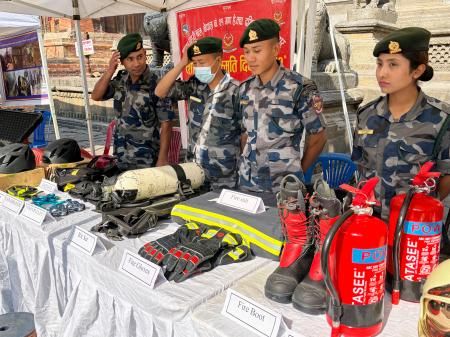Nepal: Reflecting on the Earthquake Disaster and the Path to Resilience
Ten years after the devastating 2015 Nepal earthquake, the nation continues its journey of recovery and rebuilding. This catastrophic event, which claimed thousands of lives and left countless more displaced, serves as a stark reminder of the fragility of life and the importance of disaster preparedness. This article reflects on the earthquake's impact, the progress made, and the ongoing challenges facing Nepal.
The Earthquake's Devastating Impact: A Look Back at 2015
The 7.8 magnitude earthquake that struck Nepal on April 25, 2015, and its subsequent aftershocks, caused widespread destruction. The impact was felt across the country, but particularly in Kathmandu and the surrounding areas, as well as in the mountainous regions.
- Loss of Life: The earthquake tragically claimed over 9,000 lives and injured over 22,000. The true human cost may never be fully known.
- Infrastructure Damage: Thousands of homes, schools, hospitals, and ancient cultural heritage sites were reduced to rubble. The damage to Nepal's infrastructure severely hampered relief efforts and long-term recovery.
- Economic Disruption: The earthquake dealt a significant blow to Nepal's already fragile economy, impacting tourism, agriculture, and other key sectors. The cost of rebuilding was, and continues to be, immense.
The Human Toll: Beyond the Numbers
Beyond the staggering statistics, the earthquake left an indelible mark on the lives of countless Nepalese people. Many lost loved ones, their homes, and their livelihoods. The psychological trauma experienced by survivors continues to be a significant challenge.
Progress and Reconstruction: A Decade of Resilience
Despite the immense challenges, Nepal has shown remarkable resilience in the face of adversity. The international community provided substantial aid, and the Nepalese people themselves demonstrated incredible strength and determination in rebuilding their lives and communities.
- Housing Reconstruction: Significant progress has been made in rebuilding homes, with many communities receiving new, earthquake-resistant housing. However, challenges remain, particularly in remote areas.
- Infrastructure Development: Efforts are underway to strengthen infrastructure, including roads, bridges, and hospitals, to better withstand future earthquakes. This includes implementing stricter building codes.
- Cultural Heritage Preservation: The restoration of damaged historical sites and monuments is a painstaking process, requiring specialized expertise and significant funding. Many iconic structures have been partially or fully restored, but much work remains.
Strengthening Disaster Preparedness: Lessons Learned
The 2015 earthquake served as a critical lesson in disaster preparedness. Nepal has since invested in early warning systems, improved emergency response mechanisms, and strengthened community resilience programs. However, further investment is crucial to ensure the country is adequately prepared for future seismic events.
Ongoing Challenges and the Path Forward
While significant progress has been made, Nepal still faces substantial challenges in its recovery journey.
- Economic Recovery: The long-term economic impact of the earthquake continues to be felt, requiring sustained investment and economic diversification.
- Access to Resources: Reaching remote communities with essential services and resources remains a logistical challenge, hindering recovery efforts.
- Climate Change Vulnerability: Nepal is highly vulnerable to the impacts of climate change, including more frequent and intense natural disasters. Integrating climate resilience into disaster risk reduction strategies is paramount.
Supporting Nepal's Continued Recovery: A Call to Action
Nepal's journey to recovery is a testament to the human spirit. Continued support from the international community, alongside sustained investment in infrastructure, disaster preparedness, and economic development, is crucial to ensuring a resilient and prosperous future for the nation. Learn more about organizations working on the ground in Nepal and consider supporting their efforts. [Link to reputable NGO working in Nepal]. By working together, we can help Nepal build back stronger and better prepared for future challenges.
Keywords: Nepal earthquake, 2015 Nepal earthquake, Nepal earthquake recovery, Nepal disaster relief, earthquake resilience, Nepal reconstruction, disaster preparedness, seismic activity, building codes, Nepal tourism, Nepal economy, humanitarian aid, international aid.
